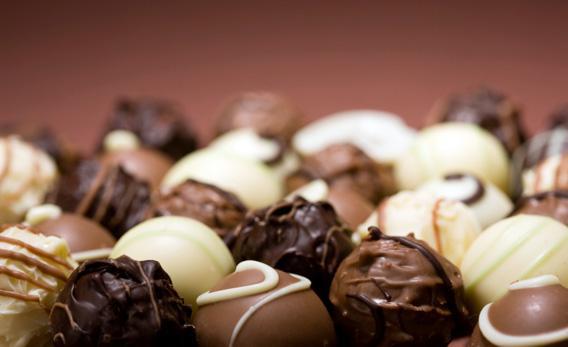A new study in The New England Journal of Medicine shows that a country’s chocolate consumption correlates strongly with the number of Nobel Prizes its citizens win. According to the author’s calculations, Switzerland consumes the most chocolate and ranks second behind Sweden in laureates per capita. (The author accuses the Sweden-based Nobel committee of favoritism.) Switzerland doesn’t have the climate to grow cocoa. How did it become known for chocolate?
Because the great chocolate innovators were Swiss. Earlier this year, the Explainer answered the question, “How did Detroit become Motor City?” In short, although some attribute Motown’s dominance to its vast natural resources, its role in manufacturing probably had more to do with the historical accident that a handful of important industrialists worked there. Henry Ford set up shop in Detroit, as did Ransom Olds and other automotive visionaries. Their companies behaved like today’s dot-coms, creating cross-pollination by sharing employees and ideas. The same process explains how the Swiss came to dominate the chocolate world through a century of remarkable innovation. In 1819, Francois-Louis Cailler developed a recipe to turn gritty cocoa beans into a solid, smooth chocolate bar. Rudolph Lindt eventually perfected the smoothing process by adding cocoa butter with a machine he called the conche. In 1830, his countryman Charles-Amédée Kohler added hazelnuts to chocolate. Jean Tobler formulated the Toblerone bar in the late 1860s. Perhaps the greatest innovation came in 1875, when Daniel Peter figured out how to combine cocoa powder with local milk to create milk chocolate, which became an instant sensation. (The Swiss can’t take credit for cocoa powder, which was developed by Dutch chemist Coenraad J. van Houten in 1828.) Eventually, Kohler, Peter, and food magnate Henri Nestlé joined forces to create the Swiss Chocolate Society, which eventually became the Nestlé company. Today, Swiss consumers eat more than 23 pounds of the country’s most famous product per year.
There’s another factor to Switzerland’s high chocolate consumption: wealth. (Which may also explain the correlation with Nobel prizes.) Few cocoa-producing countries are big chocolate consumers, because chocolate is a luxury. Ivory Coast, Indonesia, Ghana, and Nigeria, all of which have per capita GDPs well below the global average, lead the world in cocoa production. By contrast, wealthy Western Europe constitutes 6 percent of the world’s population, but eats 45 percent of its chocolate.
Got a question about today’s news? Ask the Explainer.
